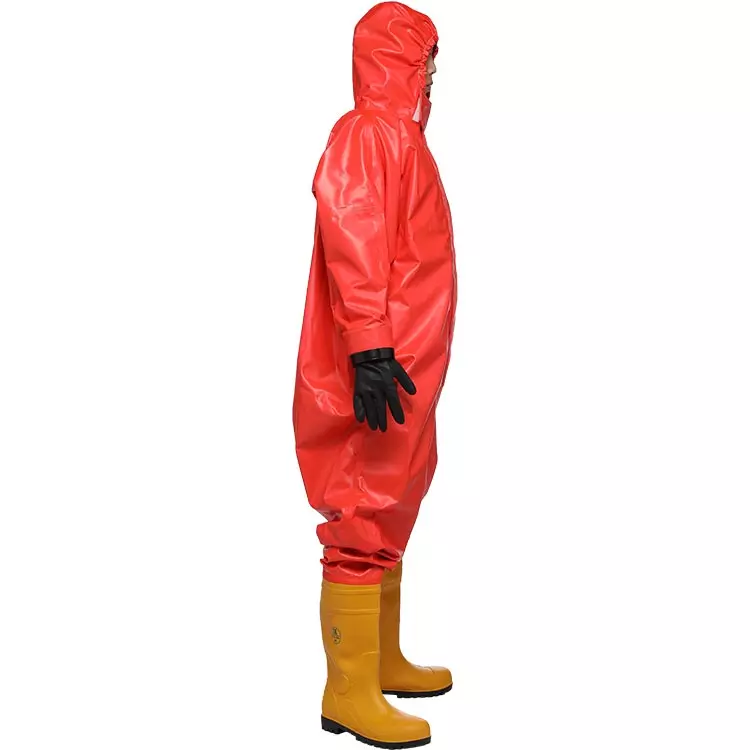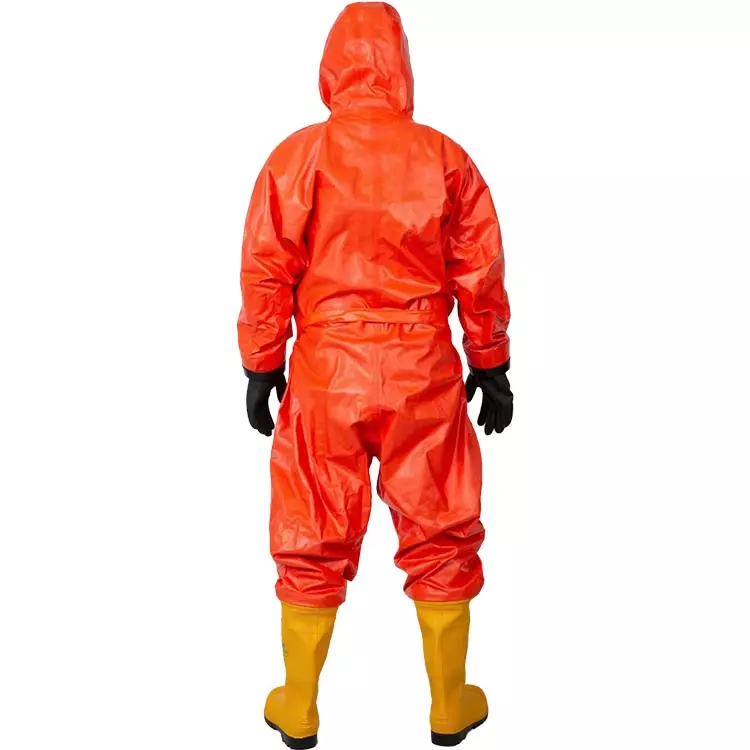Shanghai, China
+86-17317656853
inquiry@cgprotection.com




Firefighter Chemical Protective Suit,The second-level chemical protective suit is a one-piece suit consisting of a chemical protective hood, a one-piece suit, anti-smash and anti-puncture chemical rubber boots, double protective wrists, detachable chemica



If you need timely service, please contact us through online chat on our website
or Email: inquiry@cgprotection.com
WhatsApp: +8617317656853

| Model: | RHF-II CGA |
| Description: | The second-level chemical protective suit is a one-piece suit consisting of a chemical protective hood, a one-piece suit, anti-smash and anti-puncture chemical rubber boots, double protective wrists, detachable chemical protective gloves, a single sealed zipper and a water-tight zipper. It is used in conjunction with an external positive pressure fire-fighting air respirator.Flame resistant performance:flame/flameless burning time 0s, damaged length ≤8.0cm. Mechanical properties: tensile strength ≥16kN/m, tear strength ≥165N,seam strength ≥421N, glove puncture resistance ≥26N, boot sole puncture resistance ≥2066N,Chemical penetration resistance: 96% sulfuric acid/30% sodium hydroxide ≥240min |
| Application: | Firefighters wear it when entering the scene of solid or liquid chemicals for rescue; |
| Standard: | XF 770-2008, GB 24539-2021 |












© 2023 Shanghai C&G. All Rights Reserved.